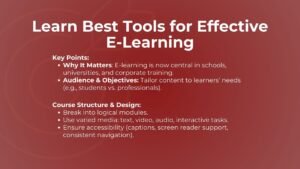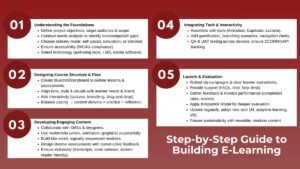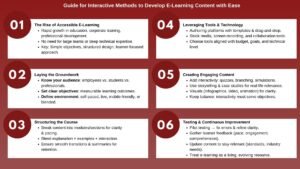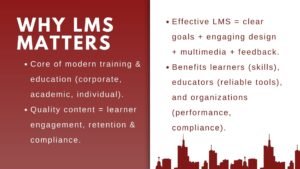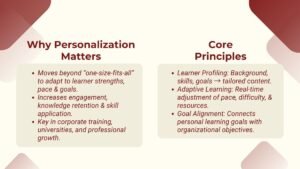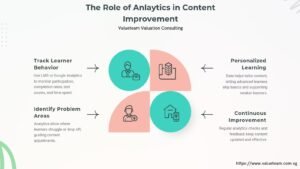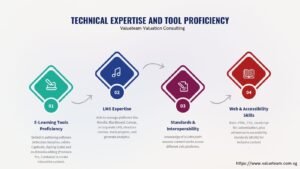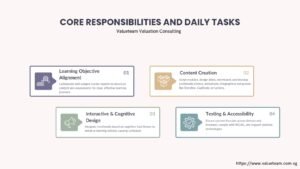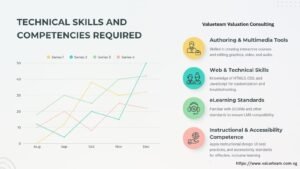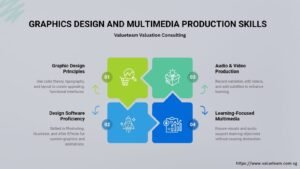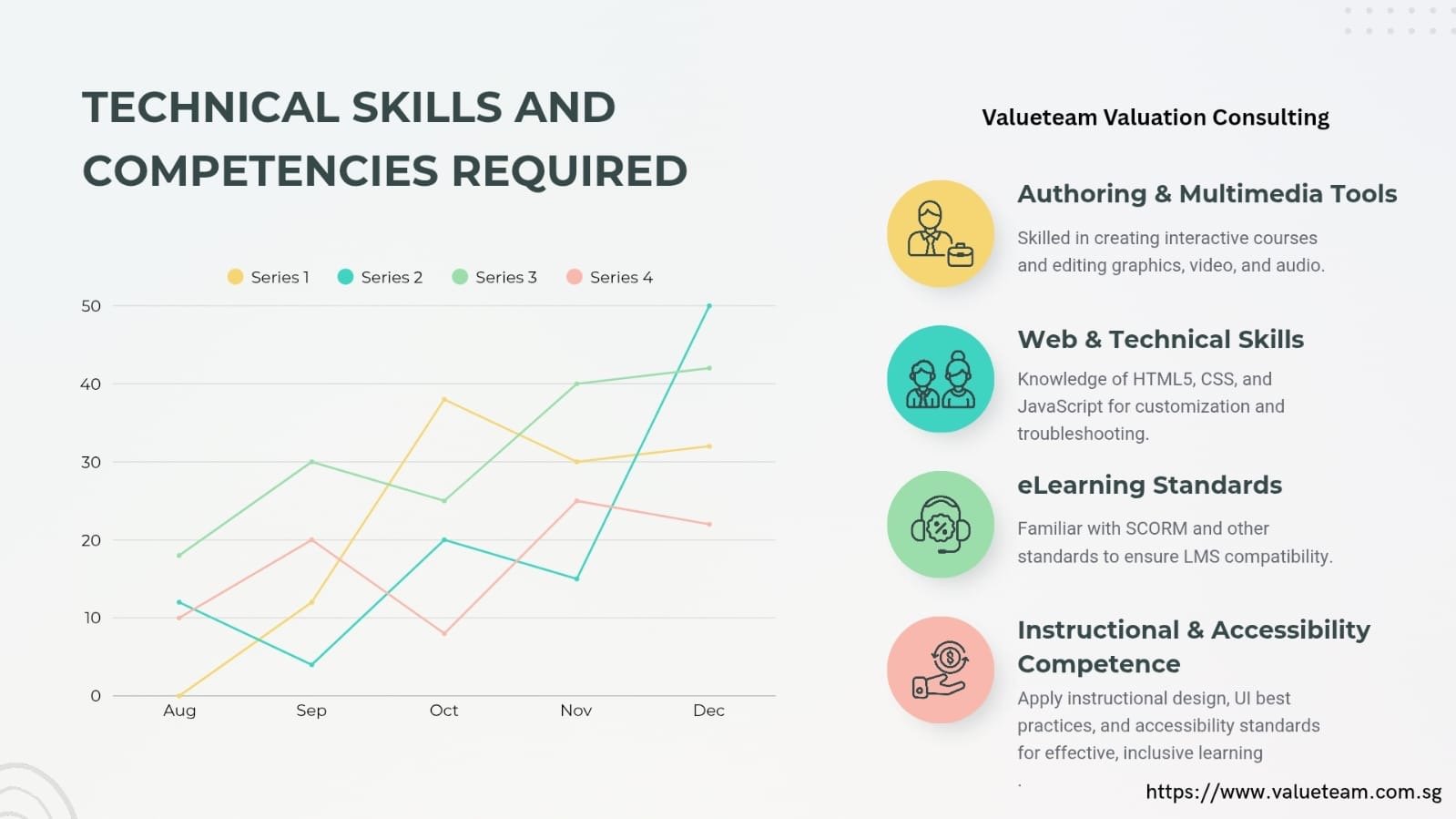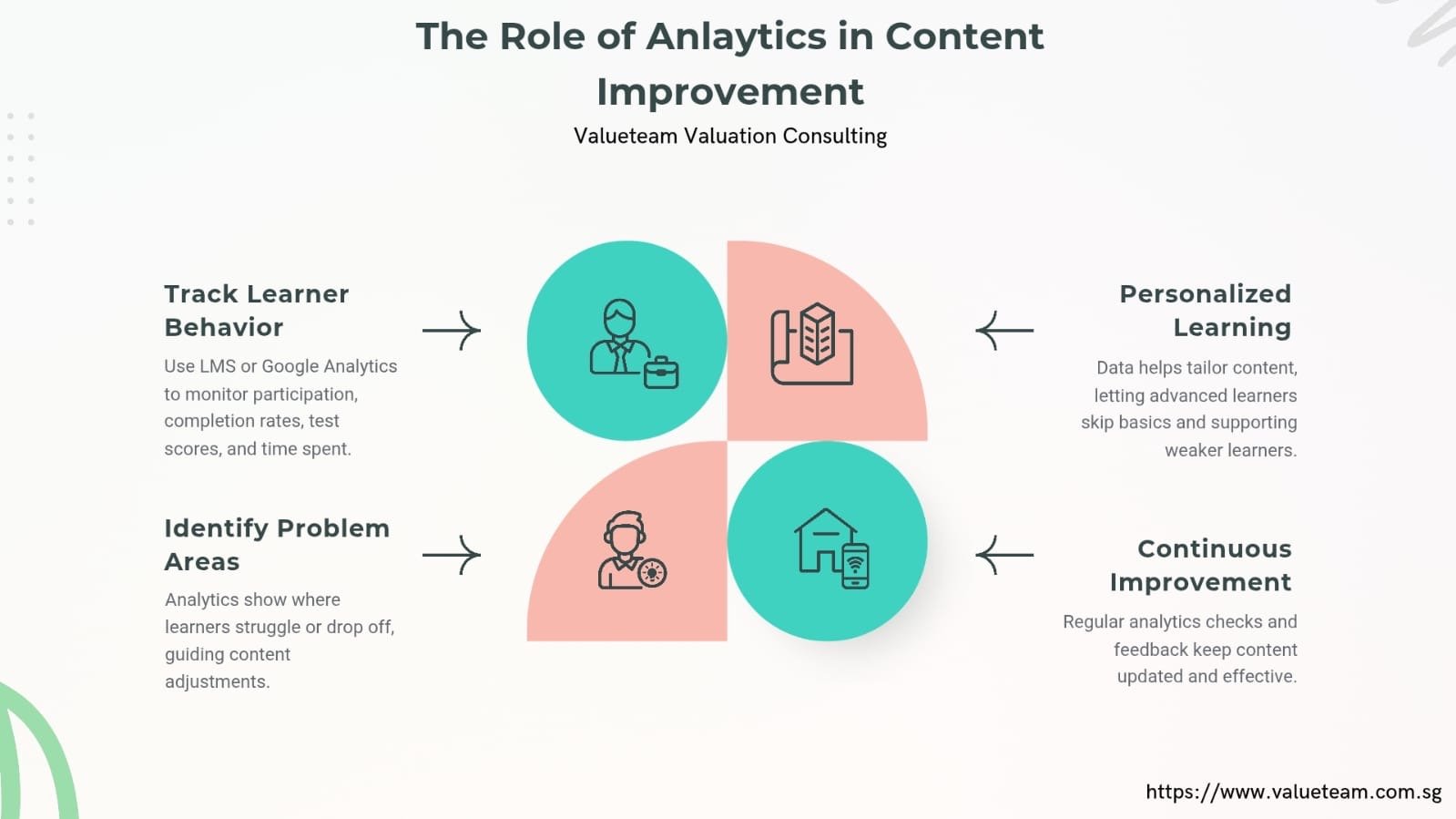
Best E Learning Content Development: Tools and Strategies
Best E Learning Content Development Singapore: Tools and Strategies
Introduction to E-Learning Content Development
E-learning has grown to be an essential core element of contemporary learning and development at work, delivering flexibility, scalability and affordability to corporate training and knowledge distribution. E-learning may not be successful without quality of the created content. Properly organized materials attract the attention of students, help to understand, and retain the information over the long period. It renders content development one of the most important processes that must involve strategic thinking and the use of the appropriate tools. Online learning processes, such as onboarding, upskilling and continuing education continue to take place in more organizations, making the capacity to design, construct, and train effective online learning material a differentiator.
Creation of content in e-learning is more broad than simply writing a lesson, or recording a video; it is an interdisciplinary task spanning the fields of instructional design, multimedia production and learning analytics. It also needs the knowledge of the intended audience, learning goals and the more appropriate modes of delivery. You may administer training to corporate training companies Singapore , develop academic programs in colleges and universities, or create self-paced courses; however, the principles of the content development of a high quality will not alter.
The need to create immersive e-learning experiences has propelled the speciation of tools and approaches as well. Through such innovations, developers are able to develop interactive and adaptive content using data. Nevertheless, the choice of tools and application of the most efficient strategies cannot be made without being aware of the project requirements and industry expectation of the learners.
Key Tools for E Learning Content Development Singapore
Current development of e-learning materials is based on a balanced use of authoring tools, multimedia software, and the learning environment (LMS). Such authoring tools as Articulate Storyline, Adobe Captivate, iSpring Suite feature the possibility to develop interactive courses, quizzes, and simulations. They frequently feature drag-and-drop interfaces, pre-built templates and publish out in SCORM or xAPI to be easily integrated with LMS systems. The benefit of such instruments is that the course can be developed rapidly even without knowing the process of extensive coding.
Video editing software such as Adobe Premiere Pro or Camtasia is critical when carrying out multimedia production of high quality educational videos and screen capture videos and animation. The key audio tools are audio recorders like Audacity, and sound design, a high-quality narration, and sound effects provide clear audio, and examples of graphic design tools are Canva or Adobe Photoshop to produce some visual elements that can be used so that the experience is more enriching in terms of learning. Such tools as interactive whiteboard and animation, such as Vyond or Powtoon, enable developers to show concepts more actively and thus enhance the engagement of the content.
One more direction is LMS platforms themselves, like Moodle, TalentLMS, LearnWorlds, which help not only to host the content but also provide tracking and analytics features. These systems are useful in tracking the progress of the learners, their completion trends, and their testing scores in order to make improvements to the content based on data. Also, the teamwork in the process of creating the content can be organized by using collaborative tools such as Google Workspace or Notion; instructional designers, subject matter experts, and multimedia developers will be able to collaborate on creating the content.
Content development workflows have also been changed by cloud based solutions. They facilitate collaboration between several contributors who can work on the same project at the same time and make sure there is version control as well as immediate updates to the published materials. The suitable set of tools is predetermined by complexity of the project, budget and technical demands, yet the time acquiring the skill of working with these tools is also a major aspect of creating professional e-learning.
Strategies for Effective E-Learning Content Creation
There are tools that make the process of creating courses technically possible but a proper strategy is necessary to develop effective content. Before embarking on the actual process, it should dive into a needs analysis process to establish what needs to be learned that is, the learning objectives, the specific characteristics of the target audience, and any performance gaps that the training will bridge. In the lack of this background, even the most impressive material can not work in order to receive the needed results.
Among the key methods, there is implementing certain models of instructional design like ADDIE (Analysis, Design, Development, Implementation, Evaluation) or SAM (Successive Approximation Model). These frameworks, including the developers, also give them a template to follow which makes the process of content development manageable, effective, and clearly quantifiable.
The learning should incorporate interactivity to maintain the interest of the learners. This could be in form of scenario-based tasks, branching simulations, or gamified quiz-based tasks that are interactive. Case studies and real-life cases are implemented to show learners how the concepts are put into the practice to offer better trainings, which are more relatable and memorable.
A similar strategy is consistency in design and branding. The benefits of learning include a recognisable interface and navigation that gets students ready for what to expect. Their minds are not taxed as they can concentrate on learning. These multimedia components ought to be used intelligently in such a way that they can be used to increase learning and not as a distraction.
Lastly is the issue of accessibility. Learners with a variety of abilities should be able to consume it such as closed captioning, compatibility with a screen reader, and variable playback speeds. Accessibility beyond compliance standards does not only expand the list of users, but also guarantees the legal compliance of many territories.
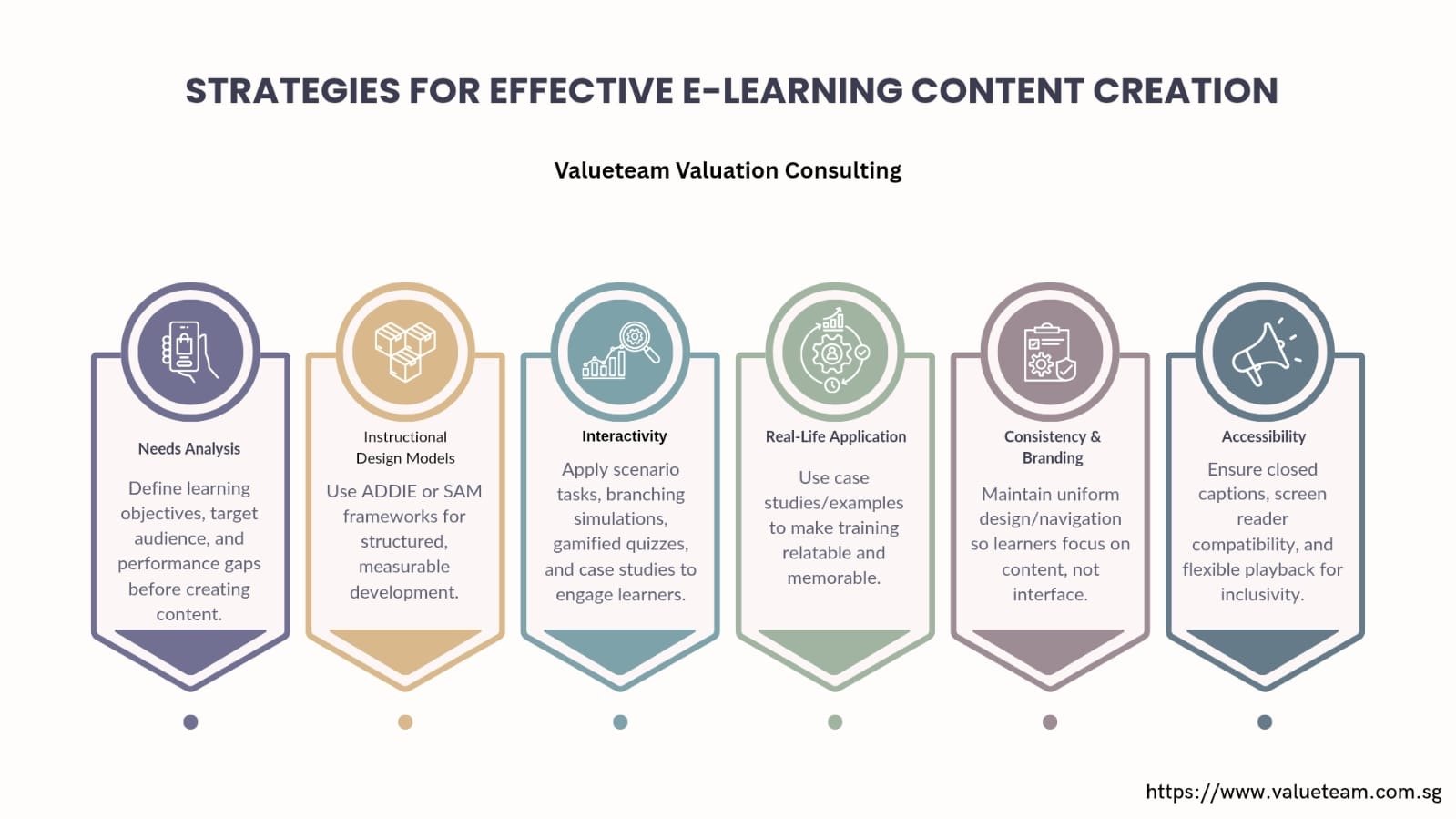
The Role of Analytics in Content Improvement
Detailed data related to the learners is one of the major strengths of e-learning compared to other traditional methods. LMS platforms or hosting Google Analytics on an e-learning portal can be used to monitor the habits of participation, completion rates, the score on tests, and the duration in each module.
These metrics indicate how learners consume the content, what parts are considered difficult to them and the points at which they tend to exit. Such information will help developers implement data-driven changes, e.g., clarifying incomprehensible descriptions, dividing long modules into smaller parcels, or providing support where learners do not perform well.
Analytics can be used in individualized learning also. Performance data analysis allows one to adjust the content according to the level of proficiency in the instant and match it with the learner. At that, one can introduce the possibility where high-level learners will be able to jump through basic questions, whereas those students who have difficulties with specific questions or tasks are sent to other training exercises. The modality is more efficient and satisfies the learners.
There is a necessity of continuous improvement in e-learning since industry standards, technologies and even the needs of the learners constantly change. Analysis checks, such as checking analytics on a regular basis and obtaining direct feedback in the form of surveys or even focus groups, will keep the content up-to-date and working well.
Trends Shaping E-Learning Content Development
The e-learning is conditioned by new technologies as well as by the changes of preferences to the learning. Some of these trends include the emergence of microlearning, whereby the content is provided in small bits and pieces and can be consumed within a maximum of five minutes. The easy-to-learn and fast-paced format suits busy lifestyles and mobile study patterns and therefore makes it an effective tool to consider as time goes by.
E-learning content development is also changing in the light of artificial intelligence. Thanks to AI tools, one should automate the content generation, tailor learning paths, and generate real-time chatbot and virtual tutor feedback. These new technologies allow more scalable and tailored learning experiences.
There is use of virtual and augmented reality in immersive learning with much of this being used in complex or even operational risk management of E learning environments training. They enable learners to train under conditions of reality but under safe environment giving them more confidence and ability to be more competent.
The other trend is characterised by integration of social learning functionalities to the LMS platforms. Interaction and knowledge sharing can be made through discussion boards, peer-review systems, and shared projects and this can be great in enhancing the learning experience.
Lastly, the concept of sustainability is making organizations embrace e-learning as greener practice as compared to classroom-based training. Digital learning helps the environment, by minimizing traveling and printed sources, and does not sacrifice training quality.
Conclusion: Building Impactful E-Learning Experiences
The process of e-learning content development is both an artistic and a scientific one where innovation, technological capacity, and planning should be balanced out. Efficient production is accompanied by the proper tools, and the effective strategies prevent failure to achieve the learning objectives, along with the engagement of the audience. Feedback is the domain of analytics that reams on to the next level of improvement and awareness with trends in the industry also allows the developers to innovate and remain persistent in the market.
With advances in fintech company Singapore, the potentials of bringing out immersive, adaptive and effective learning experiences increase. In the case of organizations, investing in the development of high quality e-learning content is not merely an endeavor to satisfy the current training requirements, but it is an effort to establish a sustainable learning and development model. With the appropriate integration of tools, strategies, and progressive minded ideas, e-learning professionals have the opportunity to create e-learning content, which educates, but more importantly, motivates learners to take the new knowledge and use it in a very real way.



